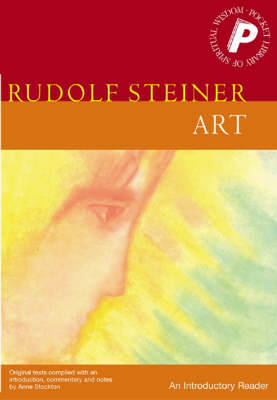Rudolf Steiner's vision of art, as with all forms of human expression, is that it should reflect our human experience of the Divine. This was not intended to suggest vague, mystical fantasy. As one of the few true initiates of the twentieth century, he was able to experience the realms from which humanity and all nature descend into temporal and spatial existence. He was able to speak with confidence of the qualitative and dynamic worlds of soul and spirit, from which all the phenomena we experience spring, including our individual existence.
The means by which the living nature of these realms can be expressed is not through rationally expressed concepts--which point only to the material, quantitative perceptions from which they are derived--but through the various forms and languages of art. Through art, human beings express the qualitative experiences of life. But Steiner goes even further.
In the more recent history of art, especially that of the West, artistic expression has become less a product of spiritual inspiration and more the expression of personal experience, which is identified with materialistic existence. Naturalistic and realistic representations of the physical world are devoid of spiritual expression.
As humanity has descended into a materialized, spiritually void experience of life, art has followed that trend. Today, it is little more than expressions of subjective, sensory views of the world. Modern nonrepresentational art, on the other hand, is an instinctive backlash against that trend, but does not get beyond personal expression. Contemporary art remains sadly isolated from the source of its own being: the world of soul and spirit. Steiner, however, attempts to unite personal human experience with the spiritual source of art, so that artists are spiritually conscious of the realm from which inspired expression descends into human existence. Such artists are neither isolated from the spirit, nor do they act as automatic mediumistic channels, but as a conscious and cooperative instruments of spirit.
Human consciousness must come to truly sense some experience of spirit before real progress in art can occur, and this is what Steiner tries to help artists achieve in the lectures and writings collected in this volume. Some of the works in this collection have been unavailable in English for some time. Topics include the being of the arts; Goethe as the founder of a new science of aesthetics; technology and art; new millenniums; the purpose of modern art and architecture; living walls; glass windows; wall colors; moving the circle; the seven planetary symbols in the first Goetheanum; "The Group" statue; and color, faces, and physiognomy.
- ISBN10 185584138X
- ISBN13 9781855841383
- Publish Date 17 November 2003
- Publish Status Out of Print
- Out of Print 1 April 2015
- Publish Country GB
- Imprint Rudolf Steiner Press
- Format Paperback
- Pages 272
- Language English
